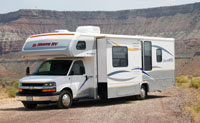It’s that time of year: February 1, 2017 marks the deadline for you to tabulate your annual OSHA Log Summary (OSHA Form 300A) and post it in a common area wherever notices to employees are usually posted.
The summary must list the total number of job-related injuries and illnesses that occurred during the previous calendar year and were logged on the OSHA 300 Form. And don’t forget to leave the Summary posted until April 30, 2017.
If you need additional assistance, have questions about recordability, or would like to compare your loss performance trends against benchmarking data, contact us today at (831) 661-5697 for more information.
 A home might seem like one of the safest places for a child to play, but household furniture carries many unforeseen dangers, especially for young children.
A home might seem like one of the safest places for a child to play, but household furniture carries many unforeseen dangers, especially for young children.
Deadly Consequences
A child is killed every two weeks due to falling furniture in the United States—70 percent are caused by TVs alone. Injuries are even higher, with over 25,000 per year. Preventive measures should be taken to ensure children are safe at home.
Preemptive Protection
Parents will often “baby-proof” their house when expecting a child. This typically includes rounding off sharp table corners and installing baby locks. Surprisingly, properly anchoring heavy furniture is often overlooked.
Preventing Tip-overs
Furniture Tip-over Myths
Remember, taking a few extra precautions now can save a child’s life in the future. Play it safe and anchor heavy furniture.
The Contracting Classification Premium Adjustment Program (CCPAP) is a discount program that can reduce the amount that an employer pays in workers’ compensation premiums.
The CCPAP was developed to provide a premium credit for employers in the contracting and construction industry who pay their employees higher than average wages. The CCPAP discount is calculated using the hourly rate of employees who are classified within the construction industry’s contracting class codes.
The system that is used to calculate workers’ compensation premiums groups employees according to risk. For each classification, the employer must pay a certain amount of workers’ compensation premiums based on every $100 of payroll. Since high wages amount to higher workers’ compensation premiums, employers use the CCPAP to lower their premiums to an amount more level with what they would be paying if they paid their employees less. With the CCPAP, employers aren’t penalized for paying their employees higher than average wages.
An employer must complete the CCPAP application and return it to the National Council on Compensation Insurance (NCCI) within 180 days from either the effective date or the anniversary rating date of the workers’ compensation policy. The CCPAP must be applied for every year.
When completing the application, the employer must determine which calendar quarter data to use. The employer will also be asked to provide a description of operations or its classification, the appropriate classification code, the total wages paid and the total hours worked.
Once the application is received by the NCCI, the average hourly wage will be computed and the CCPAP credit will be generated according to the rules for the state in which the application is being made. The insurance company will then be notified, and the credit will be applied to the policy.
The CCPAP is not a national program. Each participating state has its own rules, which include qualification and calculation of credits. Some states may also have an hourly pay rate threshold for entry into this program.
To see if the CCPAP is available for your business, consult with Scurich Insurance Services for more information about the program and the potential to lower your workers’ compensation premiums.
On Jan. 9, 2017, the Occupational Safety and Health Administration (OSHA) issued a final rule that amends its beryllium standards for the general, construction and shipyard industries.
The final rule sets a new permissible exposure level (PEL) and requires new provisions to protect workers, including exposure control measures, exposure assessments, respiratory protection, personal protective clothing and equipment, and new conventions for housekeeping, medical surveillance, hazard communication and record keeping.
The final rule becomes effective on March 10, 2017, though compliance is not required on most provisions until March 12, 2018.
Employers should become familiar with the new standards and evaluate their current workplace practices and training programs to ensure compliance with the final rule by the applicable deadlines.
Beryllium is a metal that is lighter than aluminum and stronger than steel. Beryllium is also durable, stable, conductive and nonmagnetic. Because of its properties, beryllium is often used as an alloying agent to produce beryllium copper, and it can be found in nuclear reactors, machine parts and springs, complex electronic equipment and aircraft.
However, beryllium is also very toxic. Exposure to unsafe beryllium levels can cause respiratory problems and skin disease. Beryllium exposure can also affect an individual’s eyes, liver, kidneys, heart, nervous system and lymphatic system. Also, beryllium is a known cancer-causing substance.
OSHA estimates that approximately 35,000 workers are exposed to beryllium in approximately 4,088 establishments in the United States. However, even though the highest risk of exposure for workers is at the workplace, exposure can also happen through contaminated clothing and vehicles and can affect a worker’s family members and the general public.
Employers in manufacturing and alloy production, machining and fabrication, and recycling have traditionally shown the highest average exposures to beryllium.
The final rule establishes two new PELs that apply to beryllium in all of its forms, compounds and mixtures. These standards are:
| TWA PEL 0.2 μg/m3
An eight-hour time-weighted average (TWA) PEL of 0.2 micrograms per cubic meter of air |
& | STEL PEL 2.0 μg/m3
A 15-minute short-term exposure limit (STEL) of 2.0 micrograms per cubic meter of air |
The TWA PEL dictates that employers cannot allow the average worker exposure during an eight-hour work shift to exceed 0.2 μg/m3. The new TWA PEL represents one-tenth of the previous PEL. The new TWA PEL is ten times smaller than the previous PEL because OSHA found that the previous standard posed a “significant risk of material impairment of health to exposed workers.”
Even though OSHA concluded that a TWA PEL of 0.1 μg/m3 was preferable, it chose to adopt the 0.2 PEL out of concerns over the feasibility of implementing a 0.1 TWA PEL.
The STEL PEL, or ceiling limit, was adopted because even the 0.2 μg/m3 TWA PEL continues to pose a significant health hazard to workers. The STEL PEL is intended to protect workers from the harm that may result from beryllium exposures that, though brief, exceed the TWA PEL.
The final rule sets the beryllium STEL PEL at than 2.0 μg/m3 of beryllium in any 15-minute sample during the work shift. Employers will be required to make sure that no worker is exposed to a higher concentration. Employers will need to measure their STEL PEL during the highest-exposure operations performed by workers.
The final rule also implements an action level for beryllium. Under the final rule, the action level for beryllium is a concentration of airborne beryllium of 0.1 μg/m3 calculated as an eight-hour TWA. When beryllium concentrations are equal to or higher than the action level trigger, an employer may have to:
The table below provides a summary of additional requirements and changes imposed by the final rule.
| Exposure Assessment | · Employers must provide exposure assessment when workers are reasonably expected to be exposed to airborne beryllium.
· Employers may choose between the performance or schedule monitoring options. |
| Beryllium Work Areas | · Employers in the general and shipyard industries must establish, maintain, demarcate and limit access to certain areas to limit worker exposure.
· Employers in the construction industry must designate a “competent person” to demarcate certain areas of beryllium exposure. |
| Written Exposure Plan | · Employers must establish, implement, and maintain a written exposure control plan and specify the information that must be included in the plan.
· Written exposure plans must be reviewed annually and updated as required. · Employers must also make a copy of the written plan to any employee who is, or can reasonably be expected to be, exposed to airborne beryllium. |
| Respiratory Protection | · Employers must provide adequate respiratory protection at no cost to their employees. Powered air-purifying respirators (PAPRs) instead of negative pressure respirators must be provided if requested by employees.
· Employers must ensure that employees use respiratory protection in certain situations. |
| Personal Protective Equipment (PPE) | · Employers must provide adequate PPE to their employees when:
o Exposure exceeds, or can reasonably be expected to exceed, the TWA PEL or STEL; and o There is reasonable expectation of dermal contact with beryllium. · Employers must follow the final rule’s updated standards for appropriate removal, storage, cleaning and replacement of required PPE. |
| Hazard Communication | · Employers have to take additional steps to warn and train employees about beryllium hazards. |
| Housekeeping | · Employers in the general industry must:
o Maintain all surfaces in beryllium work areas as free as practicable of beryllium; o Clean spills and emergency releases of beryllium promptly; o Use appropriate cleaning methods; and o Dispose of materials containing or contaminated with beryllium properly. · Employers in the shipyard and construction industries must: o Follow the required written exposure control plan when cleaning beryllium-contaminated areas; o Use appropriate cleaning methods, and o Provide beryllium-containing material recipients for use or disposal with a copy of the hazard communication or warning described in the final rule. |
| Hygiene Areas and Practices | · Under specified circumstances, employers must provide employees with readily accessible washing facilities and change rooms (access to showers for employee use may also be required by the general industry standard).
· Employers must take certain steps to minimize exposure in eating and drinking areas. |
The final rule also includes Appendix A to the final standard for the general industry. This appendix provides information to employers on recommended control options that employers could use to comply with their requirement to reduce exposure to airborne beryllium in beryllium work areas.
However, compliance with the information in Appendix A is recommend, not required. OSHA stated in the final rule “Appendix A is for informational and guidance purposes only and none of the statements in Appendix A should be construed as imposing a mandatory requirement on employers that is not otherwise imposed by the standard. In addition, this appendix is not intended to detract from any obligation that the rule imposes.”
Please contact [B_Officialname] or visit the OSHA Beryllium webpage for more information on this topic.
 If you’ve just bought a recreational vehicle. and can’t wait to get on the road. will Auto insurance protect your pride and joy?
If you’ve just bought a recreational vehicle. and can’t wait to get on the road. will Auto insurance protect your pride and joy?
That depends. You might want to get an endorsement to your Auto policy that would provide coverage. However, since your R. means so much more to you than just transportation, it’s best to get specialized insurance that a typical Auto policy won’t cover. Recreational Vehicle insurance combines Auto, Homeowners, Renters, and Travel coverages into a single policy that will also insure generators, water pumps and refrigerators – items that standard Auto or Homeowners policies would not cover.
The amount of coverage will depend on the value of the RV and its contents, as well as your driving record.
Before you hit the open road, give us a call our office for a comprehensive policy on your vehicle so that you can get behind the wheel with peace of mind.
Happy trails!
Scurich Insurance Services
Phone: (831) 661-5697
Fax: (831) 661-5741
Physical:
783 Rio Del Mar Blvd., Suite7,
Aptos, Ca 95003-4700
Mailing:
PO Box 1170
Watsonville, CA 95077-1170
E-mail address:
[email protected]
Available 8:30am - 5:00pm